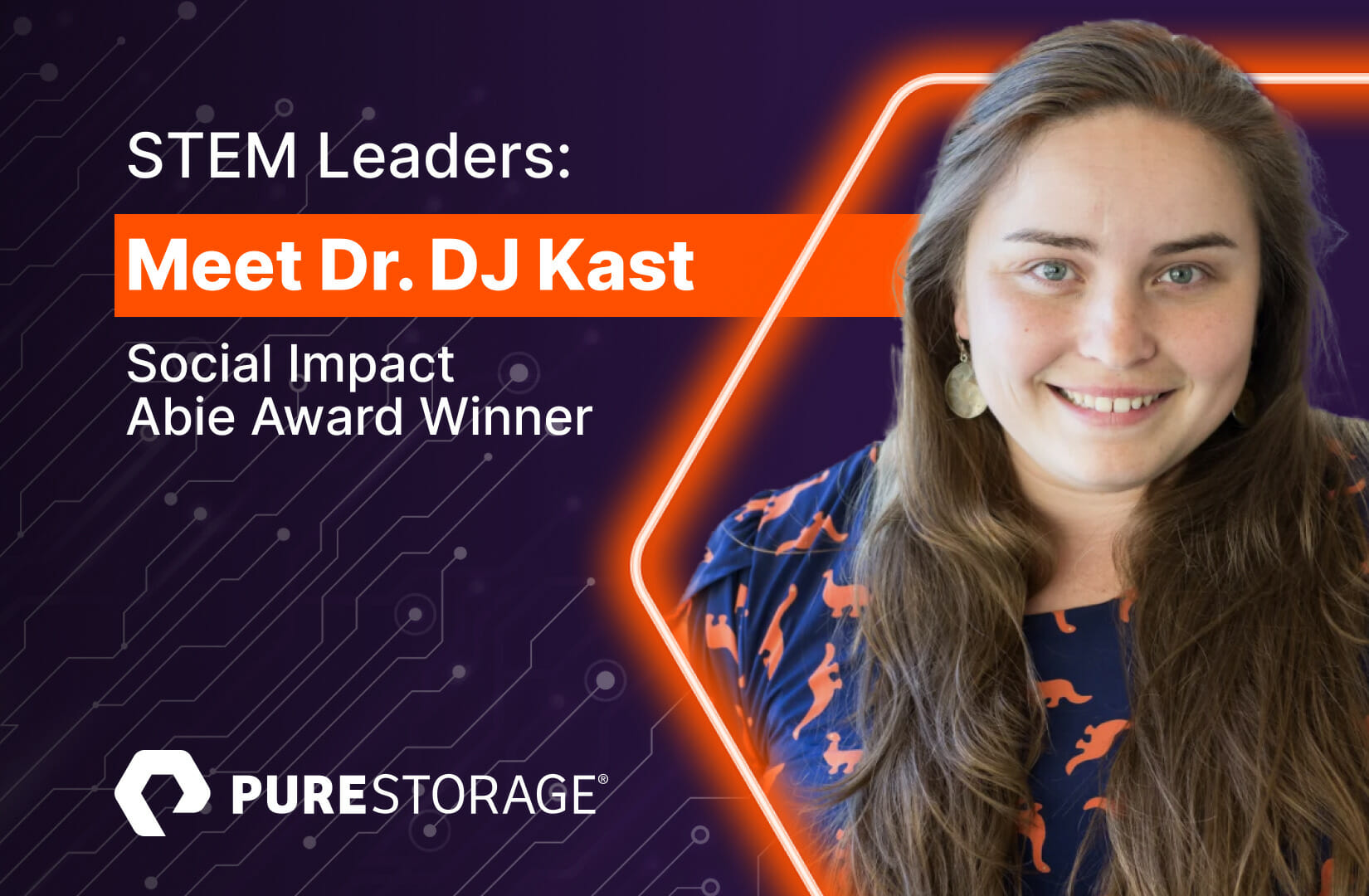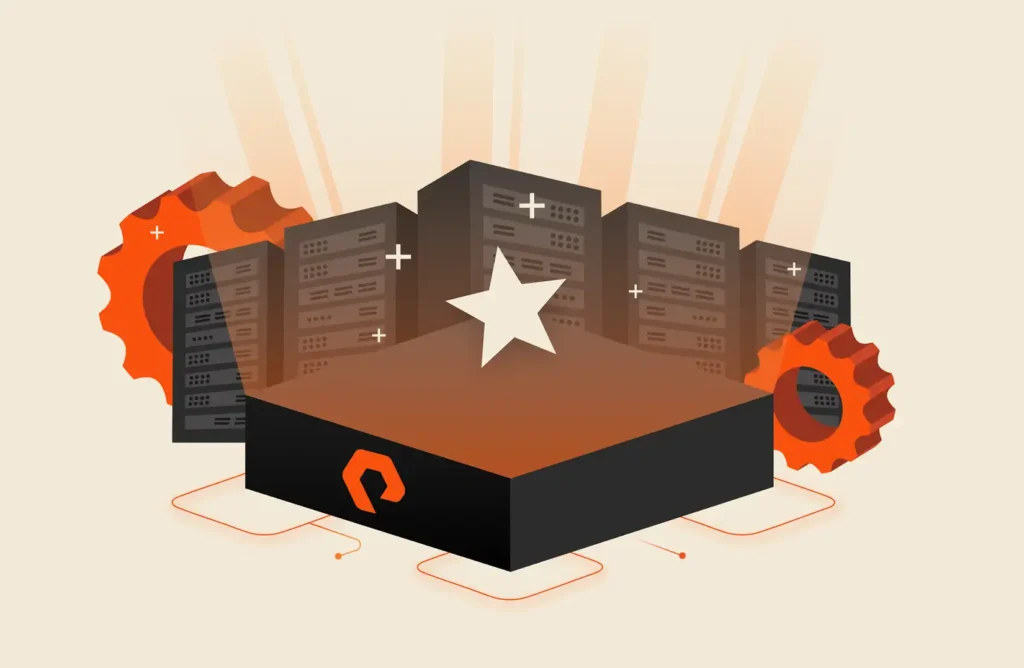Dr. Dieuwertje “DJ” Kast has a host of impressive titles to her name: Forbes 30 Under 30 in Science 2016, EE 30 Under 30 in 2020, Director of STEM Education at the University of Southern California (USC), and the winner of the 2021 Social Impact Abie Award sponsored by Pure Storage and the Pure Good Foundation.
Across all of these roles, Dr. Kast has provided STEM instruction to more than 29,000 underserved students—most of them K-12—as well as 600 educators, 20 school principals, and countless community members. In particular, it’s her work improving access to STEM education for low-income students of color that makes her a true leader in tech.
The Drive to Make STEM More Equitable
Inspired by her father’s work in cancer research, Dr. Kast originally studied marine environmental biology. Yet, while she was completing a master’s degree on the subject, she started to “see a lot of different inequities” that led to her eventually pivoting to STEM education.
In particular, Dr. Kast remembers teaching a community marine biology class for fourth and fifth-grade students for USC Seagrant.. “That was one of the first experiences in which I realized how differently I grew up from the kids that we were working with,” she says.
“Most of my kids, in those classes and even now in our programs, don’t know how to swim because swimming is an access issue.” Not knowing how to swim is a safety issue for a subject so closely tied to the ocean. But for many low-income families, swimming classes necessarily take a backseat to paying for life’s essentials.
As Dr. Kast introduced more children to STEM, she realized that she had found a long-term calling. “I really loved that work,” she says. “I felt like I was really good at it, and I kept seeking out more and more opportunities to do it.”
Transforming Children’s Relationships with STEM
Today, Dr. Kast leads multiple programs designed to increase the number of low-income students of color in STEM, including the USC Young Scientists Program, USC Wonderkids, and the USC Medical STEM Program through the USC Joint Educational Project. Additionally, she also teaches STEM research methods course for the USC Neighborhood Academic Initiative (NAI) program.
In the Young Scientists Program, Dr. Kast’s team arranges for STEM university students to give weekly science classes in their partner elementary schools. Most of the children participating are low-income students of color, and the program helps fill a gap for elementary school teachers focused on science content and literacy.
Wonderkids is an after-school STEM program in which students learn about different STEM disciplines. “We choose different fields of STEM every semester,” Dr. Kast explains. “We write a hands-on curriculum introducing the main ideas of those fields, and then we bring in scientists that are in those fields to come in and talk. Because our students are predominantly Latinx and Black, we highly prioritize bringing in scientists of color, especially women of color.”
Dr. Kast and her team don’t just provide the curriculum, the student teachers, and the guests for these programs—they also provide the supplies. Thanks to Dr. Kast’s work as a go-between with tech companies, the students have access to technology that would not otherwise have been possible—such as seeing safari animals through a VR headset, viewing their local area from outer space via Raspberry Pis, and flying drones to search for a “lost hiker.”
Meanwhile, the NAI program is a seven-year program that improves college access for low-income children by providing academic support and financial assistance. In fact, it’s so successful, Dr. Kast says, that some of the students teaching STEM as part of the Young Scientists Program have come through the NAI program.
For Dr. Kast, this full-circle moment epitomizes what these programs are about: creating a more diverse STEM field so that children can see themselves pursuing it as a career. “There’s no better way for [the student teachers] to encourage some of our students to go into science than saying, ‘I literally sat in that chair in Ms. So-and-So’s class when I was in fourth grade, so if I can do it, you can do it too,’” she emphasizes.
Importantly, the programs have a far more profound effect than simply improving grades. At the beginning of each year, students are asked to draw a scientist. “When we first started that in 2015, 90% of our drawings were of white men,” Dr. Kast explains.
Now, just seven years later, the pictures are very different. “About 50% of our drawings now are of women scientists. Ten to fifteen percent of our drawings are now of scientists of color,” she says, “and then 10% are also now starting to draw themselves as the scientist.”
Looking to the Future
Despite all that she has achieved so far, Dr. Kast still has plenty of goals. She has begun teaching an elementary-level science class to teachers in training at USC so that even schools that aren’t part of the Young Scientists Program can provide a solid science education.
She and her team are also working on publishing STEM storybooks with protagonists of color. Referring to recent studies showing that main characters in children’s books are more likely to be an animal than a person of color, she says that, “trying to find a children’s book that is based on science, and features either a main character or a scientist of color” is a challenge.
“And so we’re currently working with a publisher to create a STEM careers book series that’s written predominantly by authors of color. Every book, except for one, features a scientist of color that is in that field that we’re discussing. There are three main characters: an Asian male character, a Latina, and a Black female character.”
Looking even further ahead, Dr. Kast says, “[In terms of] the impact that I would love my work to have on the next generation, I would love for more students from diverse backgrounds to persist in STEM, and ultimately, for them to not need to persist because programs exist to help them succeed at the K-12 level and at the undergrad level. And I would love that, in the future, the faculty looks more like them.”
All of us at Pure Storage appreciate Dr. Kast’s important work in this area and look forward to her continued success as a leader in tech. Learn more about the Pure Good Foundation and its mission to “Go Do Good.”
![]()




